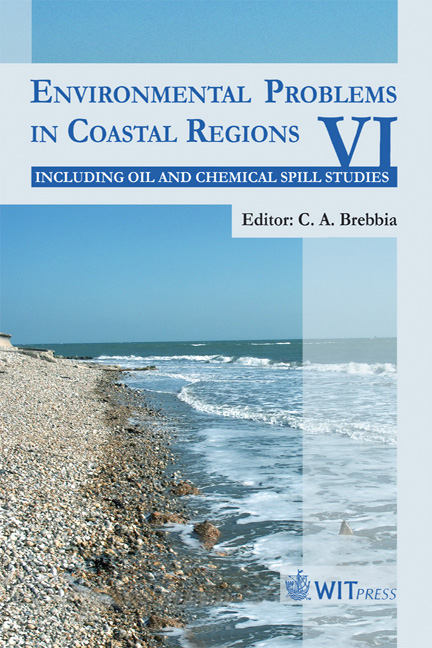Hydrodynamic Forcings And Environmental Impacts On The Coast And Shelf Of São Bento Do Norte – NE/Brazil
Price
Free (open access)
Transaction
Volume
88
Pages
10
Published
2006
Size
1,323 kb
Paper DOI
10.2495/CENV060161
Copyright
WIT Press
Author(s)
W. F. Tabosa & H. Vital
Abstract
This work presents and discusses physical oceanographic data and seafloor morphology on the Northeast Brazilian coast and shelf adjacent to Sao Bento do Norte - Rio Grande do Norte State (RN). This shelf represents a modern, high dynamic mixed shelf system. It is inserted in the Potiguar Basin, which is the most productive oil and gas Brazilian basin onshore. Moreover, this entire coast is under severe erosion. Hydrodynamic and sediment dynamic processes reflect forcing by high waves, wind power, and mesotidal regime. This high-energy setting associated with mixed sedimentation supports the presence of highly variable seabed features (e.g. dunes, reefs and isolated sand bodies). The development of such great bedforms on the shelf reflects strong currents and tidal effects. The current speed values recorded occur within the interval 1,2 ≤ ≥ 77,1 cm.s-1, with the main direction to the SW. The integration of these data allows the seabed characteristics to be related to the current pattern. This kind of information is very important to help contingency plans, to understand why erosion occurs in the São Bento area, and in conflict resolution (e.g. the oil industry, fishing, tourism). Moreover these datasets will also play a role in providing coastal zone managers with the coastal and ocean data they need to manage in a more informed manner. Keywords: bedforms, tide- and wind-driven processes, coast changes, hydrodynamic forcings, environmental geology, inner shelf, northeast Brazil.
Keywords
bedforms, tide- and wind-driven processes, coast changes, hydrodynamic forcings, environmental geology, inner shelf, northeast Brazil.





